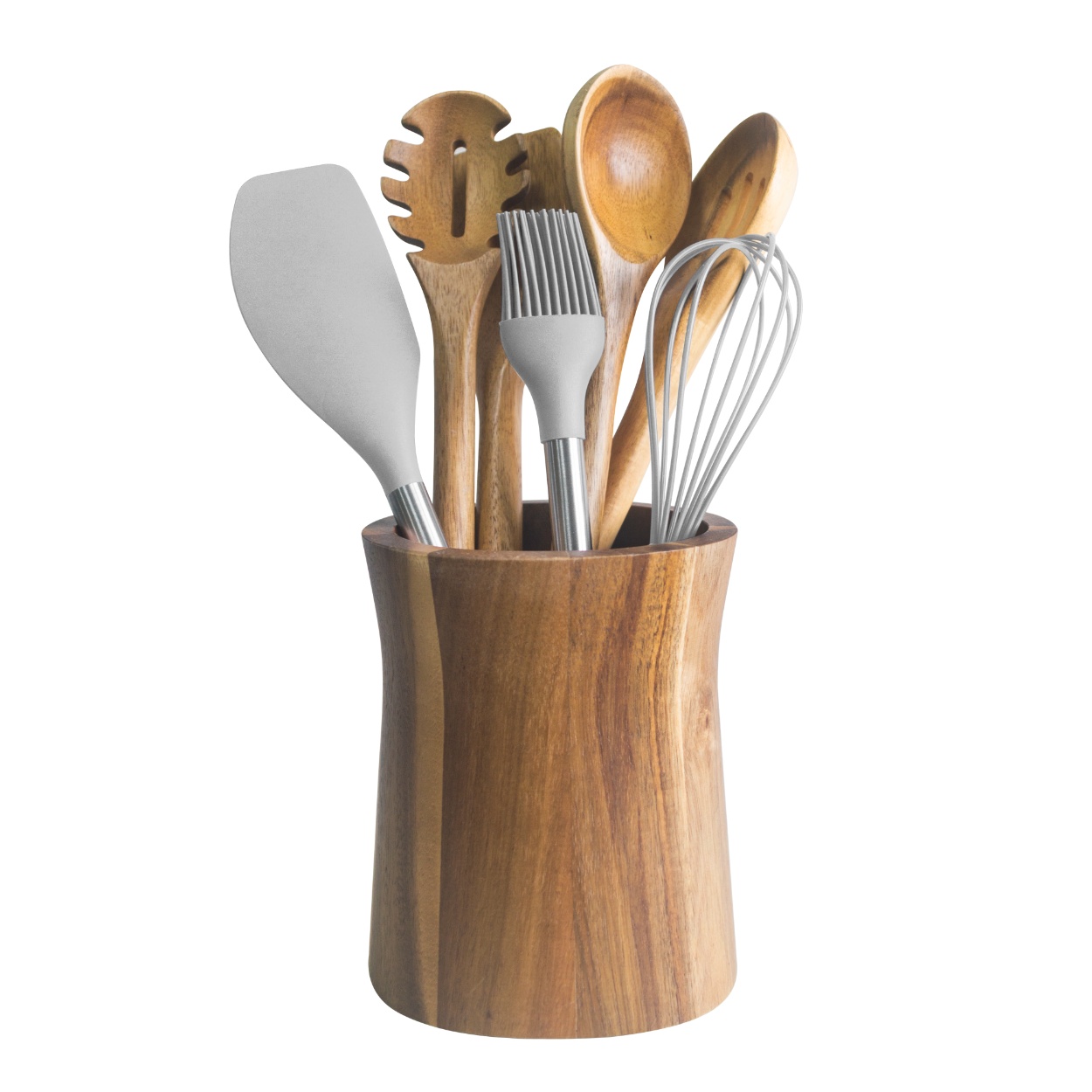How To Clean Silicone Mold?
Table of Contents
Are you a fan of silicone kitchen utensils? From baking molds to cooking spatulas, these tools are incredibly versatile and useful. But keeping them clean can sometimes seem tricky. This article will guide you through the best practices for cleaning your silicone items, ensuring they last longer and stay in top condition. Whether you’re a home baker or a professional chef, this guide will help you keep your custom kitchenware in pristine shape.
Why is it Important to Clean Silicone Kitchen Utensils Properly?
Silicone kitchen tools are a fantastic addition to any kitchen, beloved for their flexibility, heat resistance, and non-stick properties. However, their unique material also means they require specific cleaning methods to stay in optimal condition. Just like any other cooking item, silicone can trap food particles, grease, and other residues. If not cleaned properly, this buildup can harbor bacteria and affect the performance and longevity of your kitchen tools. Learning how to care for your silicone is crucial for maintaining a hygienic and efficient kitchen. This step is particularly important for those of you who make frequent use of silicone molds and baking tools!
What’s the Best Way to Clean a Silicone Mold?
The best way to clean a silicone mold is to wash it with warm, soapy water immediately after use. It’s much easier to remove food residue while it’s still fresh. Use a soft sponge or cloth to gently scrub the surface, making sure not to damage the silicone. For stubborn residues, soaking the mold in a solution of warm water and dish soap can help loosen the grime before you start scrubbing. Always rinse thoroughly to ensure no soap residue is left behind. Finally, let your mold air dry completely before storing it. Remember, gentle care is key to keeping your mold in good condition.
When it comes to cleaning your silicone bakeware, a few simple steps can make all the difference. Avoid harsh chemicals and abrasive scrubbers. Instead, stick to mild soap, water, and gentle scrubbing. For a cake utensil set or even a single silicone spatula, a quick wash with soap and warm water will generally do the trick. Regularly maintaining your silicone tools will prevent buildup and extend their life.
How to Deal with Burnt-On Residue on Silicone Kitchen Tools?
Burnt-on residue can be particularly frustrating to deal with on silicone kitchen tools. If you find yourself facing stubborn, charred marks, the first step is to soak the affected tool in a solution of hot water and white vinegar. The acidity of the vinegar can help to loosen the burnt residue. Let it soak for a while, then try scrubbing it gently with a soft sponge. Sometimes, you might need to repeat this process. Avoid using abrasive cleaners or metal scrubbers, which can scratch and damage the silicone. If the burn marks are especially tough, using a diluted mixture of baking soda and water, applied as a paste, can also work wonders. This should be followed by a thorough rinse and complete drying.
It’s important to be patient. Burnt-on residue does not come off easily, but with the right approach, it can be removed effectively without damaging your tools. Remember, preventing residue buildup by prompt cleaning is always more effective. Whether it’s a silicone mold or part of your cooking tool kit, this method works well.
What About Sticky Residues Like Resin on My Silicone Mold?
Dealing with sticky residues like resin requires a slightly different approach. For uncured resin, your best bet is to solidify it first. This can often be achieved by placing your silicone mold in the freezer for a short while. Once the resin has hardened, it’s much easier to remove. If the resin doesn’t completely detach with freezing, you might need to gently peel it off with a soft tool, like a plastic spatula, while being careful not to scratch the mold. Again, harsh chemicals should be avoided. A little patience and gentle effort are usually all you need. Always remember to wash the silicone mold afterwards to remove any remaining residue and prepare it for future use.
If dealing with specific materials like resin or glues, it’s essential to research the recommended cleaning method for those products. Some materials may require specialized solvents, and using the wrong cleaner can actually damage the silicone and potentially create toxic fumes. Be cautious and always follow the safety instructions. This also applies to kitchen accessories kit.
Can I Put My Silicone Kitchen Utensils in the Dishwasher?
While silicone is known for its durability and heat resistance, it’s not always a free pass to put everything into the dishwasher, especially on a high heat setting. Most silicone tools are dishwasher-safe, but the high heat from some dishwashers can potentially degrade the silicone over time. It’s always best to check the manufacturer’s instructions for specific recommendations for your products. When in doubt, opting for the top rack can be a safer choice, as this part of the dishwasher tends to be cooler. Even better is to use a shorter, cooler cycle.
For items like a custom cooking utensils set, it’s often better to hand wash. This way, you are in better control of water temperature and cleaning agents. Also, it’s a good practice to inspect the items after every wash to make sure there is no leftover food stuck in any corners or grooves, especially if they have complicated shapes.
What Should I Avoid When Cleaning Silicone Tools?
When it comes to cleaning your silicone cooking utensils, there are a few important ‘no-nos’ to keep in mind. First and foremost, avoid abrasive cleaners or scrubbers. Materials like steel wool or scouring pads can scratch the surface of the silicone, potentially ruining its non-stick properties and making it more prone to food residue buildup. High heat, such as prolonged exposure to direct heat, can also degrade the silicone. This includes putting it under the broiler or on an open flame. Steer clear of harsh chemicals, like acetone, unless you’re absolutely sure they’re safe for use on silicone.
Always prioritize gentle cleaning methods, using mild soap and warm water. This approach will not only keep your kitchen tools clean but also extend their lifespan. If you own a baking accessories kit or a set of silicone kitchen utensils, proper maintenance is key to their longevity.
How to Remove Colored Stains From Silicone?
Colored stains, such as those caused by food coloring or certain spices, can sometimes be a challenge to remove from silicone kitchen utensils. One method to try is a diluted bleach solution. Mix one part bleach with four parts water, and soak the stained item for a few minutes. However, it is crucial to always rinse the item thoroughly afterwards with water to remove any trace of bleach.
Alternatively, you can try making a paste with baking soda and water. Apply it to the stained area and let it sit for some time before gently scrubbing with a soft cloth. This natural method is less harsh than bleach and can often effectively lift stains. Always make sure to rinse well after cleaning. It’s good to be vigilant to prevent stains, but these methods will help when you need to address them.
How to Store Your Silicone Kitchen Tools Properly?
Proper storage of silicone kitchen tools is as important as cleaning. Ensure your items are completely dry before storing them. This step prevents any chance of mold or mildew growth, especially in dark and damp environments. Ideally, it is best to store your silicone items in a clean, dry space, away from direct sunlight or heat sources. Keep them neatly arranged in drawers or hung on hooks to prevent them from becoming bent or misshapen.
Storing your baking utensils kit or your basic tools of baking in an organized fashion not only protects them from damage but also makes them easily accessible. It’s best to create a designated area for your silicone items to keep them in tip-top condition for longer.
Can I Use Vinegar to Clean Silicone Utensils?
Yes, you can use vinegar to clean silicone utensils. Vinegar is a natural cleaner with mild acidity that is effective in cutting through grease and breaking down residue, especially burnt-on messes. A solution of warm water and white vinegar can be an effective cleaning agent. It’s also safe and non-toxic, which is a plus. Make sure to rinse your utensils thoroughly after using vinegar to ensure there is no lingering smell or taste. For stubborn stains, you can soak your silicone utensils in a vinegar solution for a longer period before scrubbing gently.
As a bonus tip, vinegar is a great solution for a variety of other cleaning tasks in the kitchen and around the home. It’s a versatile product to keep on hand. Whether you’re cleaning a silicone mold or a best baking spatula set, vinegar can be an effective ally.
Key points to remember
- Mild soap and water: Use a soft sponge or cloth and warm, soapy water for routine cleaning. This should be done after each use to prevent build up.
- Gentle scrubbing: Always use soft materials to avoid damaging the silicone.
- Soaking for tough stains: Soak the mold in warm, soapy water for tough to remove residues or burnt food.
- Rinse thoroughly: Ensure all soap residue is rinsed off the mold.
- Dry completely: Always allow silicone items to air dry thoroughly before storing.
- Avoid abrasive cleaners: Stay away from steel wool or harsh scrubbing pads.
- Avoid high heat: High heat in a dishwasher or other heating methods can cause the silicone to degrade over time.
- Be patient: Do not rush, gentle cleaning methods and patience is key to maintaining silicone utensils.
- Storage: Always make sure items are completely dry before storing to avoid moisture buildup.
- Diluted bleach: Use a diluted solution if you have colored stains but rinse thoroughly after use.
By following these guidelines, you will ensure your silicone kitchen tools remain clean, safe and durable for years to come. So go ahead, enjoy the benefits of your custom kitchenware without worrying about the hassle of cleaning! Remember a clean kitchen is a happy kitchen, and properly maintained tools are the start of that process.
Kitchenware Collection
Newest Posts
Can Silicone Baking Molds Go In The Oven?
Yes, silicone spatula is generally safe to use for frying as long as it is made from food-grade silicone and can withstand the high temperatures typically used in frying.
Is Silicone Spatula Safe for Frying?
Yes, silicone spatula is generally safe to use for frying as long as it is made from food-grade silicone and can withstand the high temperatures typically used in frying.
Are Silicone Spatula Dishwasher Safe?
This comprehensive guide explores everything you need to know, from sourcing custom cooking utensils and OEM silicone kitchen utensils to understanding the benefits of using these amazing tools



